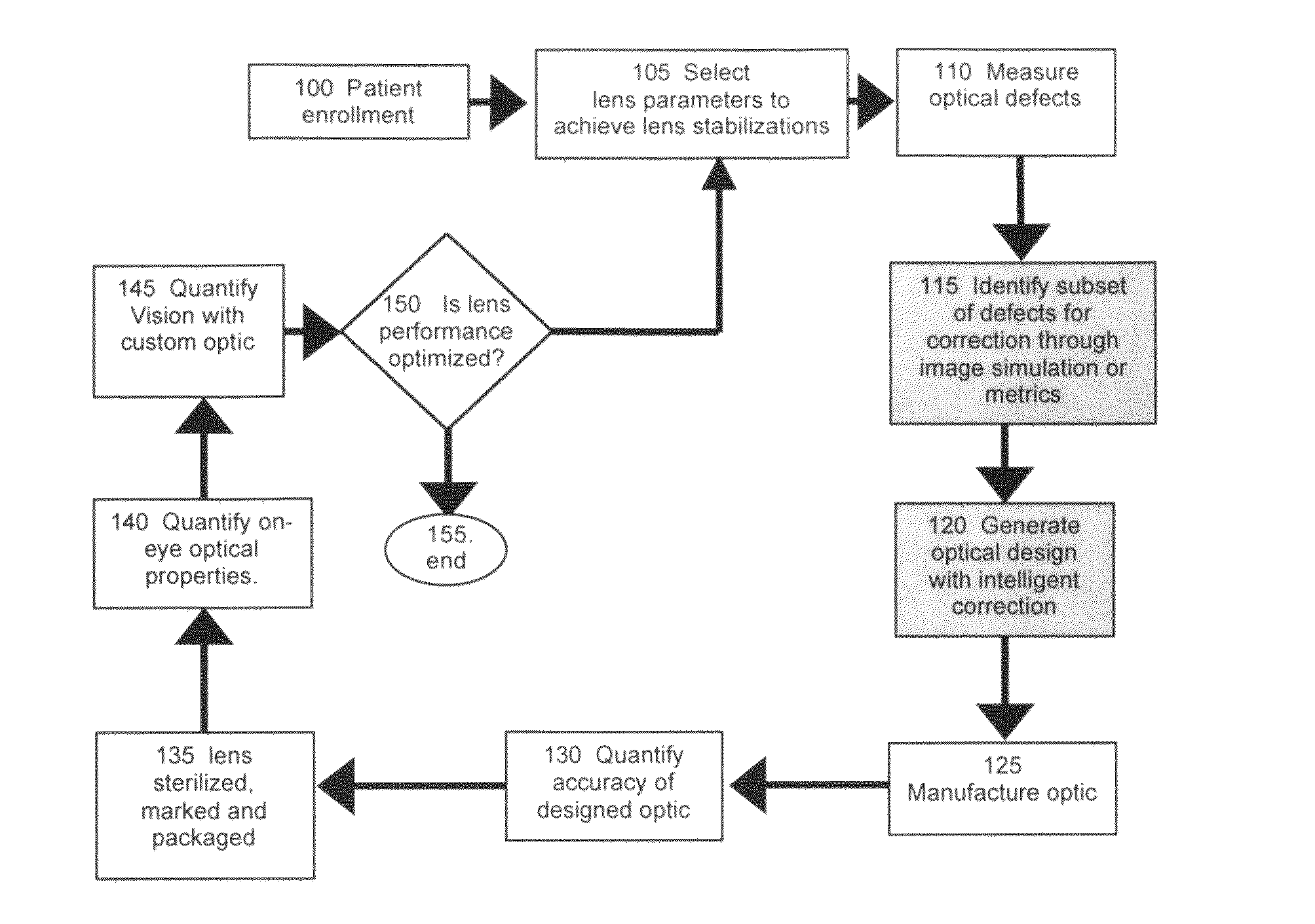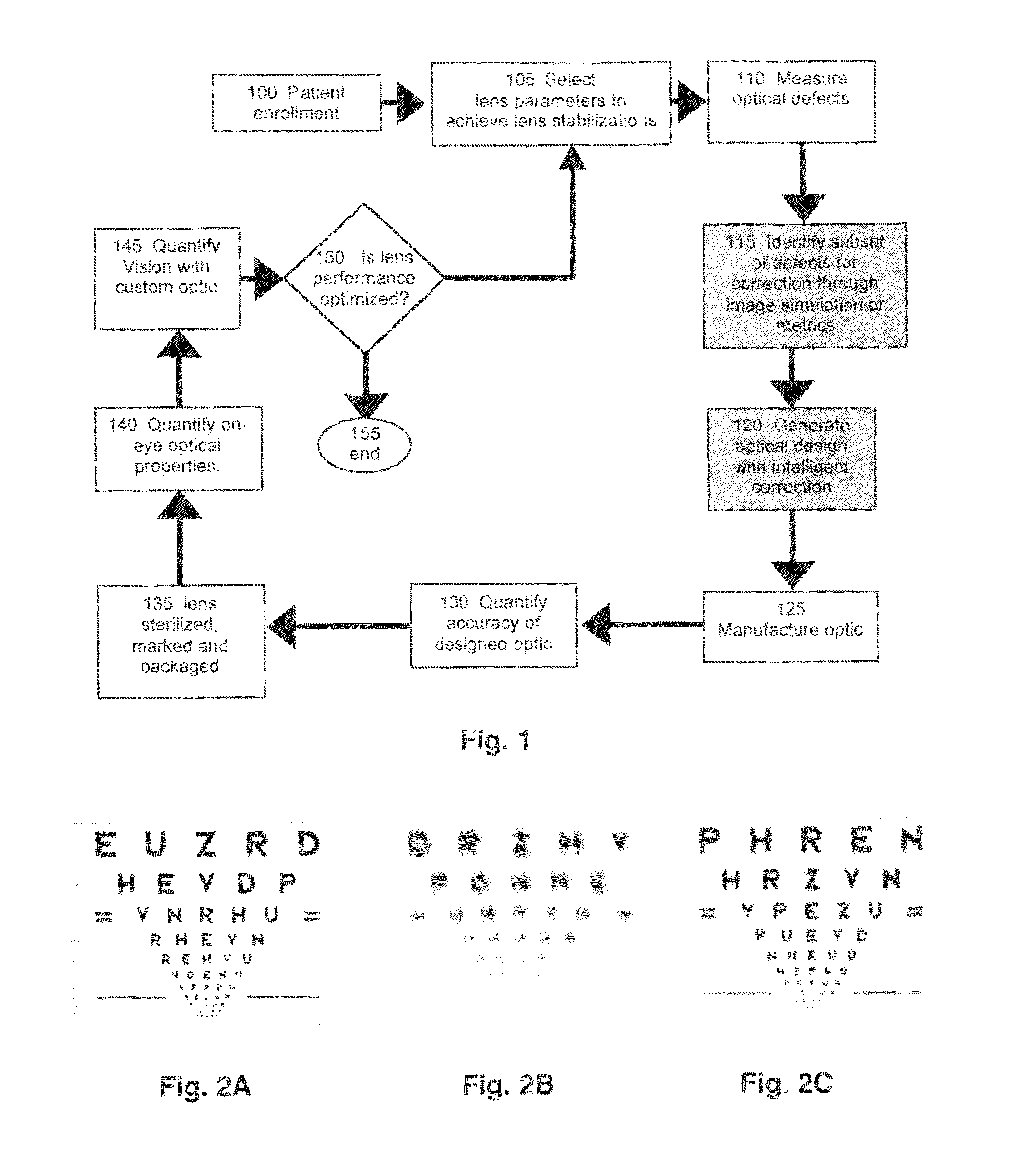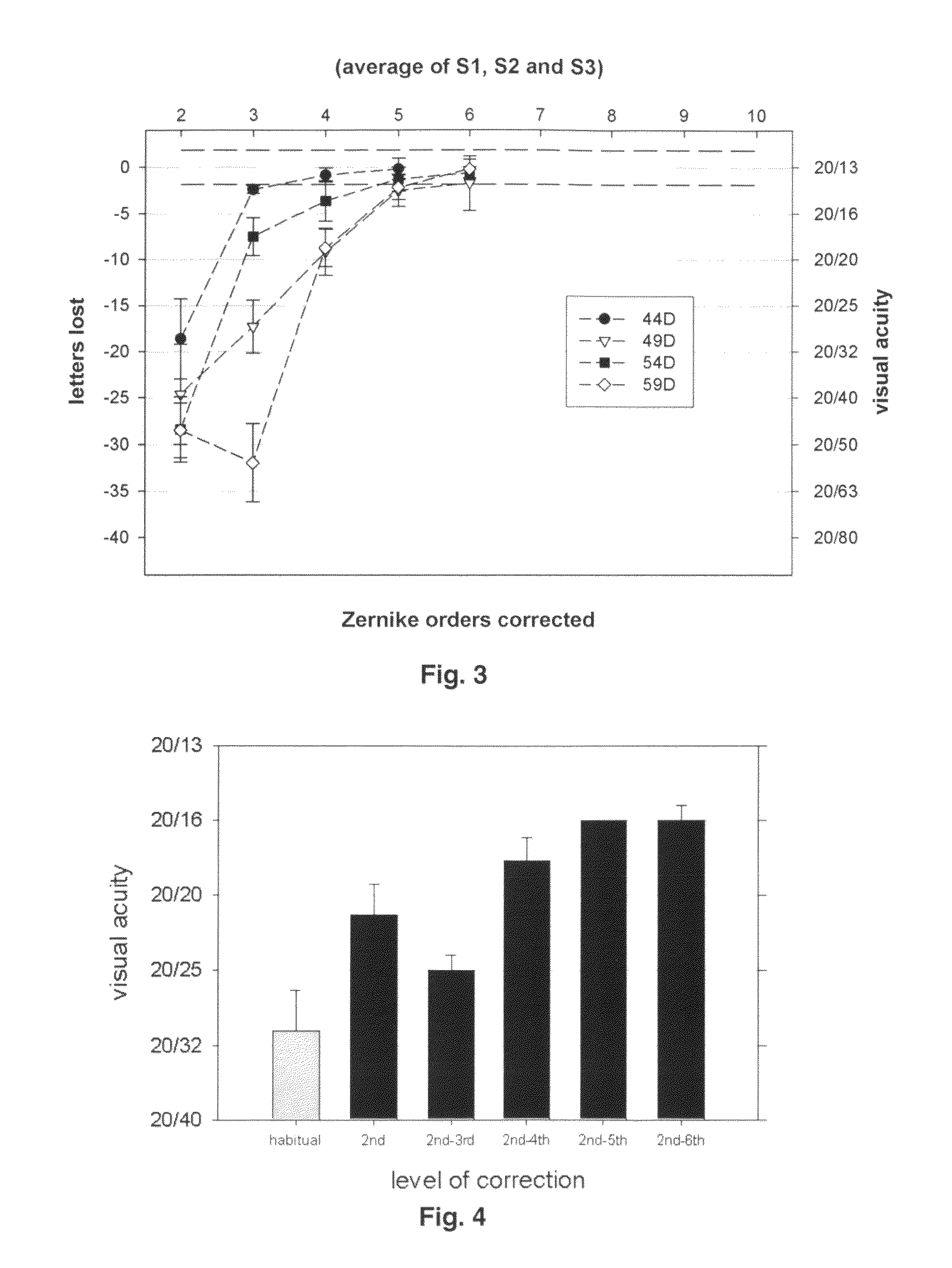Method for designing and manufacturing custom optics
a technology of optics and manufacturing methods, applied in the direction of spectacles/goggles, instruments, prostheses, etc., can solve the problems of insufficient clinically deployed methods to determine the relative impact of these aberrations on visual performance, current contact lens designs do not provide intelligent design philosophy that allows for the minimization of these aberrations, and can not meet the needs of eye health care professionals, etc., to achieve maximum visual performance and maximize visual
- Summary
- Abstract
- Description
- Claims
- Application Information
AI Technical Summary
Benefits of technology
Problems solved by technology
Method used
Image
Examples
example 1
Lens Manufacture Algorithm
[0048]The first component of the method described herein is an algorithm by which custom optics can be designed and manufactured. This algorithm can be used to design and manufacture contact lenses for any individual for which contact lenses are clinically indicated. The algorithm is depicted in FIG. 1.
[0049]The process begins at step 100 in a manner similar to conventional lens dispensation, i.e., the subject is evaluated by a clinician. If the subject is deemed a candidate for contact lens wear, contact lens parameters such as lens base curves, diameter, prism ballast, and power are determined and are iterated until a rotationally and translationally stable lens is achieved at step 105. In order to facilitate customization of the lens to the subject's optical defects, a full description of the optical defects of the eye(s) is quantified at step 110 with the stabilized lens on and off.
[0050]At step 115 a minimal subset of the residual optical defects (lens...
example 2
Description of Optical Defects
[0052]The implementation of custom ophthalmic optics used herein is determined by wavefront sensing. Wavefront sensors can determine the optical error, also referred to as optical defects or aberrations, present in an eye. Currently, the Zernike expansion is the ANSI standard (ANSI Z80.28) fitting function for describing ocular wavefront error, and is used here to describe optical aberration. The Zernike expansion is a long-established method for defining optical errors and is not unique to the eye and is not necessary to the methods being described. Any mathematical method could be used that adequately defines the optical defects of the eye. The Zernike expansion is used herein for illustrative purposes and because it is the national standard established for describing ocular wavefront error.
example 3
Image Simulation
[0053]FIGS. 2A-2B demonstrate the process of image simulation. FIG. 2A shows a non-blurred visual target. FIGS. 2B and 2C show targets that are blurred using image simulation. The process used to form a blurred image is convolution.
[0054]First, the eye's aberrations are used to define a point spread function. This function describes the spatial distribution of a point of light after having been imaged by an optical system. Second, the point spread function is applied to the larger image, which is constructed from a finite number of point sources. The summed impact of distortions caused by the point spread function on all points in the image is seen as the blurred visual target.
[0055]The optical defects used to blur the chart in FIG. 2B provide an idea of how aberrations impact visual performance. FIG. 2C shows a visual target where a subset, but not the complete set, of the optical defects used to blur the image in 2B has been corrected. Note that FIG. 2C is similar ...
PUM
 Login to View More
Login to View More Abstract
Description
Claims
Application Information
 Login to View More
Login to View More - R&D
- Intellectual Property
- Life Sciences
- Materials
- Tech Scout
- Unparalleled Data Quality
- Higher Quality Content
- 60% Fewer Hallucinations
Browse by: Latest US Patents, China's latest patents, Technical Efficacy Thesaurus, Application Domain, Technology Topic, Popular Technical Reports.
© 2025 PatSnap. All rights reserved.Legal|Privacy policy|Modern Slavery Act Transparency Statement|Sitemap|About US| Contact US: help@patsnap.com



